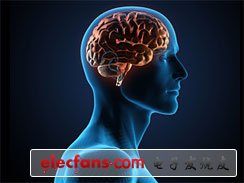Are you suffering more intensely than others? Are women who cry and runny hurt more than men who bite their teeth? Scientists have recently constructed a brain "pain map" that may end these long-disputed topics. Brain scanning technology helps quantify pain How painful is it? This is a subjective vocabulary that is difficult to describe. But at present, we can already use scientific methods to get the exact answer. It turned out that British scientists built a "pain map" of the brain, which can accurately know the pain point and the intensity of the pain. This technique may help those who think their peers exaggerate the symptoms of pain, and can scientifically verify the severity and authenticity of the peer's pain. British neuroscientists use brain scanning technology to see how the brain responds to pain, as well as signals from various parts of the body. You can also test the intensity of people ’s pain through the strength of the brain ’s signals. When there is no specific quantitative standard for pain, doctors will encounter many difficulties in diagnosing patients. They can only estimate the location and grade of their pain based on the patient's statement of pain. This method is often unreliable. Dr. Frevia Mancini, a neuroscientist at the University College London who helped build the "pain map," said: "When patients feel pain, we can track them through brain signals, which can accurately reflect the patient's pain level. " She believes that this technology can change the diagnosis method, allowing patients and doctors to more objectively quantify the pain situation in the first time. Recently, she published her preliminary findings at the World Pain Conference. Can effectively help children and other people with expression difficulties Dr. Frevia Mancini used laser pulses to stimulate the fingers of volunteers participating in the experiment, while using MRI scanners to observe changes in their brain imaging. It was found that every time the laser emits pain, it triggers a small amount of neurons in the volunteer's somatosensory cortex. Researchers are still studying how to quantitatively study sensory intensity. She pointed out: "When we use the laser to stimulate the finger of the patient, we can clearly see the signals from different areas of the brain, and our body will also respond. If the patient's communication ability is poor, it is difficult for him to express exactly The degree of pain. The signal of the brain can be used to locate the pain. With this method, we can specifically investigate some questions that previously did not seem to have an exact answer, such as whether smoking can relieve pain. " This study is particularly useful for treating children's pain because children do not understand how to describe their pain symptoms. There are also patients who benefit from communication disorders due to accidents. This method can assist doctors to correctly diagnose and treat pain, because sometimes patients always exaggerate their pain because of anxiety. At present, chronic pains such as backaches and headaches are torturing one in five people in the world. These diseases are difficult to evaluate, so doctors usually prescribe a lot of pain medicines for patients to take on their own, but these medicines are actually harmful. Professor Aerini Tracy, a neuroscientist who studies pain at Oxford University, believes that brain imaging allows us to see the inside of the central nervous system and detect its operation, which can better help patients in treatment. "When the brain processes signals from the injured part of the body, it produces pain, which allows us to identify which brain area is important for pain. In addition, we can also detect changes in brain chemicals, gray matter volume, etc. . All these tests can help us determine the impact of chronic pain on the brain to develop new therapies and strengthen patient care. " YUEQING WEIMAI ELECTRONICS CO.,LTD , https://www.weimaicarconn.com